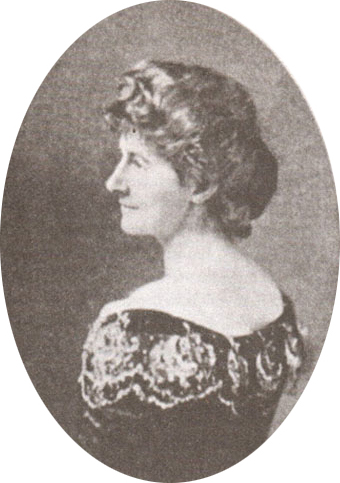Cobham Hall is a vast and outstandingly beautiful red brick mansion in a large park, built in 1584, a combination of Elizabethan, Jacobean, Carolean and 18th Century styles. When new, Lord Brooke, Lord Chamberlain, with the power of censorship, in Shakespeare's time, lived here. A smaller house had been visited by Elizabeth 1st in 1559. Henrietta Maria and Charles 1st spent their honeymoon night at Cobham Hall. Royalty down the centuries have been entertained here, most recently Edward VIII.
Mistresses of Cobham Hall included Frances Stewart better known as 'Britannia' on the old penny coin. She was the pin-up of the Court of Charles II, married the Duke of Richmond and lived at Cobham Hall, without succumbing to the ardent pursuit of Charles II. Samuel Pepys thought she was the most beautiful woman he ever saw: she clearly lived, while her husband was alive, in one of the most beautiful houses in England. Her face as Britannia was struck on coins and medals by the enamoured King. It was on the 50p piece in 2005.
Britannia, mistress of Cobham Hall, Francis Stuart, Duchess of Richmond by Peter Lely - Royal Collection, Public Domain https://commons.wikimedia.org/w/index.php?curid=1259482
The house is H-shaped, with Elizabethan wings. The central section contains the Gilt Hall, by John Webb which was in place by the time of Frances Stewart. We had tea and cakes in the stylish, ducal Gilt Hall to celebrate my cousin’s birthday. The whole Gilt hall celebrates music. Below, right, is the musicians' gallery.
In 1883, England cricket captain Hon. Ivo Bligh, later the 8th Earl of Darnley, led the victorious English cricket team against Australia and brought home ‘The Ashes’ to Cobham Hall (which may in fact be ashed from the library hearth, the urn having been dropped. The Ashes (of bats) were awarded to him by an Australian lady, Florence Morphy from Melbourne who later became his wife, the Countess of Darnley and doyenne of magnificent Cobham Hall. I was not surprised to find that the entire Hall was used to tend Australian wounded during World War One, its beauties comforting men after Gallipoli.
Australian Florence Morphy who became mistress of Cobham Hall 
The Blighs, Earls of Darnley enjoyed the lovely library (which we all expressed the wish to live in) with its door disguised as bookshelves i.e fake book spines - a crafty technique that Dickens imitated in his own study at nearby Gad’s Hill (but all his titles are amusing, or puns). Dickens knew this library well, being a close friend of the Earl and they drank together at the Leather Bottle, in Cobham village. There is original Regency wallpaper in one state bedroom and a plethora of breathtaking Flemish 17th century marble fireplaces (late Elizabethan) some with the artist’s head and a possible death mask of Mary Queen of Scots in marble. These fireplaces are the glory of the internal parts of the house.

The gardens, landscaped for the 4th Earl of Darnley by Humphrey Repton are being restored by the Cobham Hall Heritage Trust. The Gothic Dairy, The Pump House and some of the classical garden buildings are also being renovated. The Landmark Trust aims to renovate and rent out the tumbled down Gothic Dairy by Wyatt, where 18th century Countesses made cheese like shepherdess Queen, Marie Antoinette. The grounds can be visited on open days (£2.50 for gardens only) and yield many delights for the lover of nature, especially in spring, when the gardens and woods are resplendent with bluebells daffodils, narcissi and a myriad of rare bulbs.
- Cobham Hall is only open to the public on certain dates. Guided tours of the house cost £5.50.
- For public opening times see the website of Cobham Hall School.
- For holidays in historic buildings, see The Landmark Trust. For a video of the renovation of Cobham Dairy see here
- A fully clothed and impressive wax effigy is the intended monument of Frances Stewart ('Britannia') shown at the bottom of this web page for Westminster Abbey where she is buried with her husband.

nice
ReplyDelete